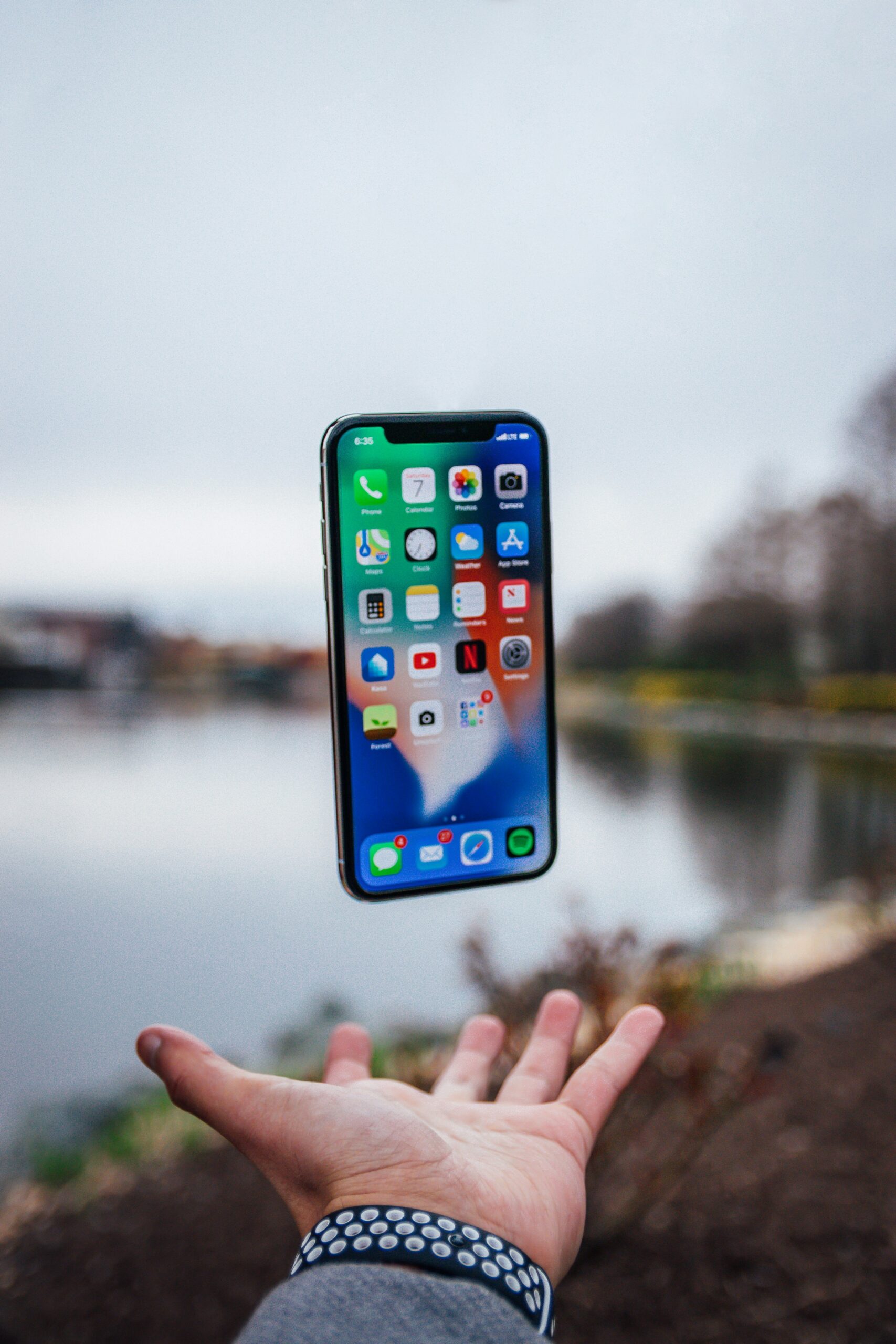Employee wellness programs are evolving rapidly, harnessing cutting-edge technology to enhance the workforce’s health, engagement, and productivity.
With a focus on leadership’s commitment to quality of life, companies are investing in innovative tech solutions—from mobile apps that tailor exercise regimens to wearable gadgets that track sleep and activity levels.
These initiatives are not just perks; they’re part of a comprehensive approach to employee benefits that considers everything from mental health support to life insurance.
Integrating technology into wellness programs offers a pathway to improved employee retention and a vibrant company culture.
Keep reading to discover how technology is reinventing the landscape of employee wellness, offering tools that empower individuals and teams alike to thrive.
Key Takeaways
- Mobile Apps Add Personalization and Gamification to Employee Wellness Programs, Boosting Engagement
- Wearable Technology and Real-Time Data Enhance the Customization and Effectiveness of Wellness Initiatives
- Virtual Reality Offers Immersive Wellness Experiences That Promote Physical and Mental Health
- Social Media and Online Platforms Foster Community Support and Motivate Employees in Wellness Challenges
- Telehealth Services Make Health Resources More Accessible, Supporting Physical and Mental Wellness Regardless of Location
Integrating Mobile Apps for Personalized Wellness Journeys

In the bustling employee wellness landscape, companies seek innovative ways to keep their workforce engaged and healthy.
Central to this pursuit is the integration of mobile apps, which offer unparalleled potential for customization to meet the diverse needs of each employee.
These interactive platforms can be instrumental in delivering a user experience that resonates on a personal level, allowing each individual to track their wellness journey with ease.
Progress, once elusive in the nebulous quest for better health, now becomes vividly charted milestones, spurring motivation and driving employees to embrace healthier habits.
Adding a layer of fun through gamification, these mobile apps transform routine wellness activities into a vibrant, competitive adventure, fostering a culture of participation that entwines seamlessly with the daily lives of employees.
Tailoring Wellness Programs to Individual Needs
Personalization is the cornerstone of effective wellness programs; it acknowledges that each employee is on a unique health journey. By leveraging technology, companies can tailor these programs to individual lifestyles, health targets, and risk factors, ensuring that the efforts align with personal goals and life circumstances.
| Feature | Benefit |
|---|---|
| Customized Fitness Plans | Aligns with personal exercise goals and capabilities. |
| Nutrition Tracking | Supports individual dietary needs and weight loss objectives. |
| Mental Wellness Tools | Provides resources tailored to stress levels and mental health state. |
| Health Risk Assessments | Identifies potential issues early on for proactive management. |
| Progress Monitoring | Enables employees to see their improvements over time, enhancing motivation. |
Enhancing User Experience With Intuitive Design
User experience takes center stage when designing mobile apps for wellness. An intuitive interface invites employees to interact with the app effortlessly, creating a smooth pathway to adopting and maintaining a wellness routine. It’s essential that these technologies offer immediate, uncomplicated navigation so users can focus on their health without being bogged down by complex features or overwhelming options.
Tracking Progress and Achievements
Seeing tangible progress is a powerful motivator. Mobile apps for wellness allow employees to track their achievements, from exercising regularly to maintaining healthy eating habits. By setting milestones and celebrating every victory, be it big or small, employees remain motivated to pursue a healthier lifestyle and contribute positively to their workplace culture.
| Feature | Description | Impact |
|---|---|---|
| Exercise Milestones | Custom goals based on each employee’s fitness level, from novice to expert. | Encourages a progressive approach to physical activity, boosting overall exercise rates within the company. |
| Nutritional Achievements | Monitors diet and celebrates healthy eating streaks and balanced nutrition choices. | Supports a structured approach to eating well, reducing health risks and fostering long-term habit changes. |
| Mental Health Breakthroughs | Tracks usage of mental wellness tools and time spent on mindfulness or therapy sessions. | Highlights the importance of mental health, driving interest and participation in mental health resources. |
| Wellness Education | Logs learning modules completed, focusing on topics from stress management to understanding healthcare policies. | Educates employees, promoting informed decisions about health and wellness that benefit both personal and professional life. |
| Health Metrics | Records biometric data and health screenings, providing insight into an individual’s health evolution. | Empowers employees with information to manage health proactively, reducing absenteeism and enhancing productivity. |
Encouraging Participation Through Gamification
Inviting employees into a world where their wellness efforts are rewarded through game-like features, the use of gamification breathes new life into health programs.
- Employees earn points for activities such as meeting exercise targets or choosing nutritious meals.
- Leaderboards bring a friendly competitive edge, encouraging teams to support each other’s health goals.
- Challenges and milestones turn personal achievements into collective victories, building a stronger workplace community.
The result is a dynamic environment where engagement is not just hoped for, it’s actively pursued through a blend of technology and play.
Leveraging Wearable Technology to Boost Program Engagement

In the age of smart devices and constant connectivity, wearable technology presents a game-changing avenue for enhancing employee wellness programs.
By providing employees with the tools to track their health data in real time, companies are embracing a hands-on approach to wellness that goes beyond traditional methods.
From syncing smartwatches with wellness apps to offering personalized feedback on daily activities, wearable technology empowers employees to set realistic health goals and actively engage in their personal well-being.
With such devices, data analytics become a potent ally, offering a treasure trove of health insights tailored to each user, and facilitating a deeper understanding of one’s health journey—ultimately elevating the effectiveness of modern wellness initiatives.
Syncing Wearables With Wellness Apps
As companies integrate wearable technology with wellness apps, they create a seamless experience for employees to monitor their physical activity and health metrics. This synergy between wearable devices and software allows for real-time updates and personalized feedback, ensuring that wellness programs are more interactive and relevant to the user’s daily life. The convenience of having health data at one’s fingertips encourages continuous engagement and fosters a proactive approach to personal well-being.
Setting Personal Goals and Monitoring Activity
Wearable technology is transforming the way employees set personal health goals and monitor their activity, providing a clear roadmap for personal wellness achievement. By wearing devices that track everything from steps taken to calories burned, users gain immediate feedback and insights that allow them to adjust their behaviors and routines effectively. This precision in self-monitoring bridges the gap between general wellness intentions and specific, actionable health objectives, fueling a culture of accountability and sustained engagement in wellness programs.
Using Data Analytics for Customized Health Insights
Through data analytics, wellness programs transform into a powerful ally for health promotion, providing employees with customized insights that make sense of complex health data.
Virtual Reality: A New Dimension in Wellness Programs

Virtual reality (VR) is revolutionizing the approach to wellness in the workplace, providing immersive experiences that extend far beyond the limitations of the physical office environment.
By incorporating VR into wellness programs, organizations are not only offering innovative exercise and meditation sessions but are also unlocking new possibilities for emotional well-being.
Employees can now engage in fitness routines in simulated outdoor settings or explore serene landscapes—all from the comfort of their indoor spaces.
These enhanced experiences do more than just entertain; they support mental and emotional health, offering a reprieve from the stresses of work while promoting relaxation and mindfulness.
Immersive Fitness and Meditation Sessions
Virtual reality technology is carving out a new frontier for workforce well-being, allowing employees to engage in fitness and meditation routines that transport them to serene environments or energizing landscapes. These VR experiences offer a mental escape from the confines of traditional office spaces, helping to lower stress levels and enhance focus through guided exercises that feel both exotic and personal. This blend of technology and tranquility offers a fresh, invigorating twist to the concept of workplace wellness.
Simulating Outdoor Environments for Indoor Activities
Virtual reality brings the majesty of the great outdoors right to the employee’s desk, allowing them to immerse in virtual landscapes that can reduce the monotony of indoor exercise routines. Whether taking a brisk walk through a virtual forest or cycling along a simulated coastline, VR has the potential to transform indoor activities into captivating experiences that bolster both physical and mental well-being.
Enhancing Emotional Well-Being With VR Experiences
Virtual reality technology is not just shaping physical wellness but is equally pivotal in enhancing emotional well-being. As employees slip on VR headsets, they’re transported to peaceful realms, free from the pressures of their workday. This digital sanctuary not only soothes the mind but also serves as a tool for emotional resilience, allowing staff to return to their tasks with renewed vigor and a calmer outlook.
Social Media as a Tool for Community Building and Support

As businesses forge ahead in amplifying their wellness programs, social media emerges as a potent ally, creating a fabric of support and engagement that keeps participants connected, even beyond the confines of the workplace.
Encouraging the formation of online wellness communities on platforms like Facebook and LinkedIn, companies tap into the innate human desire for shared experiences and camaraderie.
These virtual spaces become a haven where employees can share triumphs, lifting one another with success stories that kindle inspiration and spark a collective pursuit of health goals.
Moreover, technology’s reach allows for the orchestration of virtual challenges and events that galvanize the workforce, fostering a spirit of unity and healthy competition that is as fun as it is beneficial for overall well-being.
Creating Online Wellness Communities
By harnessing the connectivity of social media, companies cultivate a supportive environment where employees can foster mutual encouragement around wellness initiatives. Online platforms provide a virtual gathering place where employees can celebrate milestones, exchange health tips, and find companionship in their fitness journeys, strengthening ties and promoting a culture of health within the organization.
Sharing Success Stories to Inspire Others
When employees showcase their wellness milestones on social media, they spark a movement of empowerment and aspiration within the company. Highlighting personal stories of triumph over wellness challenges has a ripple effect, inspiring colleagues to embark on their own health journeys and fostering an atmosphere of mutual support where progress is collectively celebrated.
Organizing Virtual Challenges and Events
Workplaces are embracing the digital realm to bring employees together for wellness-based virtual challenges and events, promoting active participation through inclusive, company-wide activities. By launching fitness challenges or wellness quests online, they create excitement around achieving collective health goals while making space for individual achievements within the safety and convenience of remote environments. This innovative approach leverages technology to not only keep wellness programs vibrant and engaging but also to reinforce the community spirit that is essential to employee motivation and retention.
The Power of Data Analytics in Wellness Program Success

The advent of data analytics has opened new vistas for employee wellness programs, transforming piles of raw data into actionable insights.
By collecting and analyzing participant data, businesses are now equipped to dynamically tailor wellness initiatives to individual employee needs.
Adapting programs with precision not only maximizes relevance for each participant but also enhances overall engagement and effectiveness.
Furthermore, the application of predictive analytics is pioneering the shift towards preventative wellness strategies, empowering companies to foresee potential health issues and intervene before they escalate.
The intelligent use of data is therefore becoming a pivotal force in crafting successful, sustainable wellness programs.
Collecting and Analyzing Participant Data
When companies harness the capacity of data analytics, they elevate wellness programs from mere perks to powerful tools of engagement and health improvement. The process of gathering detailed health metrics and behavioral patterns through employee participation in wellness activities allows organizations to craft highly customized and effective wellness strategies. Purposeful analysis of this data not only informs the continuous refinement of program offerings but also assists in identifying trends and potential health interventions that support the workforce’s well-being in a measurable, meaningful way.
Adapting Programs to Meet Participant Needs
Shifting wellness initiatives to suit individual preferences and needs is essential for maintaining momentum in corporate health efforts. With a dynamic approach, responsive programs engage employees by showing genuine care and commitment to their unique health challenges and aspirations.
| Technology | Application | Outcome |
|---|---|---|
| Interactive Software Platforms | Deliver personalized fitness and nutrition guidance. | Employees experience tailored support that aligns with personal health goals, enhancing program adoption. |
| Health Assessment Tools | Identify individual risk factors and conditions. | Enables personalized intervention plans that address specific health concerns, leading to targeted and effective outcomes. |
| Wearable Devices | Monitor and provide feedback on daily physical activities. | Encourages consistent exercise by allowing employees to set and meet personalized activity goals. |
Predictive Analytics for Preventative Wellness Strategies
Predictive analytics is carving out a future where wellness is proactive rather than reactive. With this technology, companies can analyze health trends and employee behavior to anticipate and address potential health issues before they become problematic, fundamentally altering the landscape of employee wellness programs toward prevention and personalized health strategies.
Telehealth Services: Bridging the Gap in Wellness Accessibility

With the ever-evolving landscape of employee wellness, technology serves as a pivotal linchpin in enhancing engagement and accessibility.
Telehealth services have emerged as a critical component, virtually eliminating the barriers to entry for health and wellness resources.
This approach ensures that every employee has the opportunity to receive personalized coaching and mental health support tailored to their needs, regardless of their physical location.
By introducing such services into wellness programs, companies are not just adhering to the changing workforce demands; they are also fostering a culture where health becomes an accessible priority for all.
Expanding Access to Health and Wellness Resources
Telehealth services are demolishing traditional barriers, providing a lifeline to those seeking to maintain their well-being amidst a hectic lifestyle or remote work setting. Through virtual consultations and digital health monitoring, employees now have immediate access to physicians and therapists at their convenience, creating an inclusive environment where every individual can readily manage their health, regardless of geographic constraints or time limitations.
Personalizing Wellness Coaching Through Telehealth
Telehealth opens the door for personalized wellness coaching where employees receive one-on-one attention from experts, tailored to their specific health challenges and goals. This technology-driven approach offers a bespoke experience, allowing for adjustments in real time based on feedback and progress, thus creating a supportive, individualized wellness path directly connecting the user with their chosen health professional.
Integrating Mental Health Support Into Wellness Programs
Integrating mental health support into wellness programs via telehealth services is vital for cultivating not only a physically fit workforce but also one that is mentally resilient. Providing easy access to mental health professionals through these platforms ensures comprehensive wellbeing coverage that extends support to coping with stress, anxiety, and other challenges that impact mental wellness: a significant stride in fostering a healthier, more productive team.
| Service | Function | Benefit |
|---|---|---|
| Online Therapy Sessions | Connects employees with qualified therapists virtually. | Offers convenience and privacy, leading to increased use of mental health resources. |
| Virtual Support Groups | Provides a platform for employees to share experiences and offer mutual support. | Builds community and reduces feelings of isolation linked to mental health issues. |
| Mindfulness Apps | Encourages regular mindfulness practices and meditation. | Helps in stress reduction and improves overall mental clarity and focus. |
| E-mental Health Programs | Delivers self-help tools and resources for mental wellness. | Empowers employees to take proactive steps in managing their mental health. |
| Crisis Hotlines | Offers immediate assistance during mental health emergencies. | Ensures employees have round-the-clock access to urgent mental health support when needed. |
Conclusion
Technology plays an essential role in personalizing employee wellness programs, increasing both participation and efficacy.
By integrating mobile apps, wearables, and virtual reality, wellness initiatives become more engaging and tailored to individual needs.
Data analytics and telehealth services further enhance these programs by offering predictive insights and expanding access to health resources.
Ultimately, leveraging technology in wellness programs fosters a supportive community and culture of health that benefits employees and companies alike.
